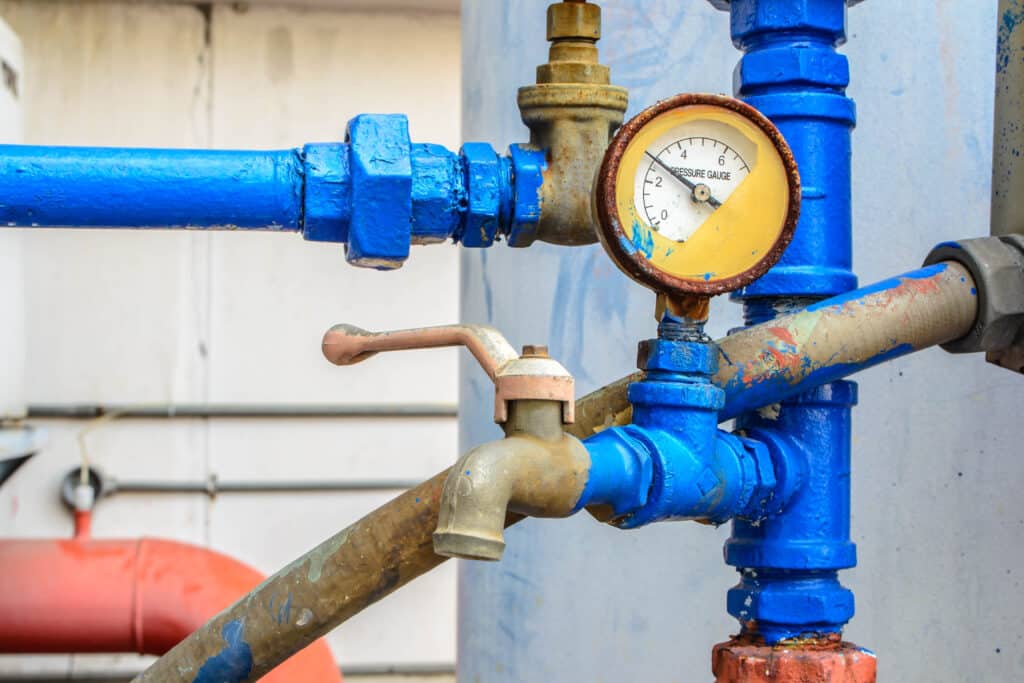Ways to Deal with Low Water Pressure in Your Home
Ways to Deal with Low Water Pressure in Your Home
Blog Article
What are your opinions on 10 Reasons for Low Water Pressure in Your House?

Low tide pressure in your home can be an aggravating trouble, influencing whatever from bathing to cleaning recipes. If you're experiencing weak water circulation, there are several feasible causes and solutions to discover. In this overview, we'll review common reasons for low water stress and practical steps to address the concern effectively.
Intro to Low Tide Stress
Low tide stress happens when the circulation of water from your taps, showers, and various other components is weaker than normal. This can make daily jobs extra difficult and less efficient. Comprehending the causes of low tide pressure is critical to locating the ideal service.
Typical Root Causes Of Low Tide Stress
Faulty Pressure Regulatory Authorities
Pressure regulatory authorities are responsible for keeping constant water stress in your home. If they malfunction, it can lead to low water stress or irregular flow throughout your home.
Community Water Issues
Often, the trouble exists outside your home. Community water system problems, such as main line leakages or maintenance job, can momentarily reduce water stress in your area.
Pipe Obstructions
Gradually, pipes can end up being clogged with natural resource, sediment, or debris, limiting the flow of water. This is a typical problem in older homes with galvanized steel pipelines.
Deterioration
Deterioration within pipes can result in leaks and lowered water stress. Corrosion buildup can restrict water circulation, specifically in aging plumbing systems.
Just How to Diagnose Low Tide Stress
Inspecting Pipes
Check visible pipes for indicators of leaks, deterioration, or clogs. Take note of any unusual audios, such as knocking or rattling pipelines, which might show concerns within the plumbing system.
Consulting with a Plumber
If you're incapable to determine the reason for low tide pressure, consider working with a specialist plumber to carry out a complete inspection. They can determine underlying concerns and advise ideal remedies.
Checking Faucets and Fixtures
Start by evaluating the water pressure at different faucets and fixtures throughout your home. If the concern is isolated to details locations, it may show local troubles.
DIY Solutions to Repair Low Water Pressure
Flushing Water Heater
Debris accumulation in the hot water heater can limit circulation and minimize efficiency. Flushing the tank regularly helps remove debris and preserve ideal performance.
Examining Stress Regulator
Make sure that the stress regulatory authority is operating appropriately. Adjusting or changing the regulator can aid recover correct water stress throughout your home.
Cleansing Aerators and Showerheads
Mineral deposits can accumulate in aerators and showerheads, lowering water flow. Eliminate and clean up these elements regularly to boost water pressure.
Cleaning Clogs in Pipes
For minor obstructions, attempt making use of a plumbing serpent or chemical drainpipe cleaner to clear obstructions in pipes. Beware when utilizing chemicals and follow safety and security guidelines.
When to Call a Professional Plumber
If DIY initiatives fall short to deal with the problem or if you believe significant plumbing problems, it's best to seek help from a certified plumber. They have the knowledge and tools to address complicated problems safely and efficiently.
Safety Nets to Keep Water Pressure
Setting Up a Stress Booster
Consider installing a stress booster pump to boost water stress in areas with regularly reduced circulation. This can be especially helpful for multi-story homes or residential properties with high-demand components.
Monitoring Water Usage
Bear in mind water usage habits and prevent overtaxing the plumbing system. Straightforward modifications, such as shocking showers and washing loads, can assist maintain sufficient water pressure.
Regular Maintenance
Set up routine maintenance for your plumbing system to stop concerns such as rust, leaks, and blockages. Addressing minor problems early can help prevent even more substantial fixings later on.
Conclusion
Taking care of low tide pressure can be frustrating, yet identifying the underlying causes and carrying out suitable remedies can recover ideal flow throughout your home. Whether it's cleaning aerators, evaluating pipes, or talking to a plumber, taking proactive actions can make sure a steady supply of water for your daily demands.
FOUR WAYS TO FIX LOW WATER PRESSURE NOW
Turning on a shower or faucet only to find the water comes out in a sad, slow drizzle is never a good feeling. How exactly are you supposed to wash a pan or take a quick shower when it takes 10 minutes just to rinse off a little soap? The good news is that when your water pressure is bad, there's always a cause: typically one that can be easily fixed. Here are some of the most common causes of low pressure and what you can do to fix the issue:
DEBRIS AND MINERAL DEPOSIT BUILDUPS
If you notice low water pressure from just one or two of the fixtures in your house, the problem likely has to do with debris buildup. Water is full of minerals and other debris, all of which can accumulate in your pipes and on your fixtures. This can cause a blockage that affects how much water flows through. To fix this, try filling a small plastic bag with white vinegar, and use a rubber band to hang it around your showerhead or faucet. Let the head of the fixture soak for a few hours, and the vinegar should loosen the deposits.
WATER LEAKS
Leaks are another common cause of low water pressure. If water is flowing out of your plumbing through a hole or crack before it can reach your fixture, the pressure coming out of the faucet or showerhead will be lower. A plumbing professional is your best bet for finding and repairing a leak in your water supply pipes.
Leaks are another common cause of low water pressure. If water is flowing out of your plumbing through a hole or crack before it can reach your fixture, the pressure coming out of the faucet or showerhead will be lower. A plumbing professional is your best bet for finding and repairing a leak in your water supply pipes.
A VALVE ISSUE
If you have low water pressure throughout your home, check your main shut-off valve to make sure it's completely open. You may also want to see if there's a pressure-reducing valve installed. If there is, have a plumber help you adjust the settings to get the pressure you're looking for.
OTHERS USING WATER
Believe it or not, your low water pressure could be caused by your neighbors. If you notice low pressure at certain times of day, it may be because you and the people living next to you have similar schedules - when everyone is showering at the same time, the pressure will be lower in every home. Low pressure throughout the neighborhood may also be caused by an issue with your municipal water supply. If that's the case, call the supplier to see if they're working on the issue.
https://www.rotorooter.com/blog/water-leaking/low-water-pressure-fixes/

Hopefully you enjoyed reading our article about . Thank you for taking a few minutes to read our piece. Be sure to take the time to distribute this page if you enjoyed it. We treasure your readership.
Call Today Report this page